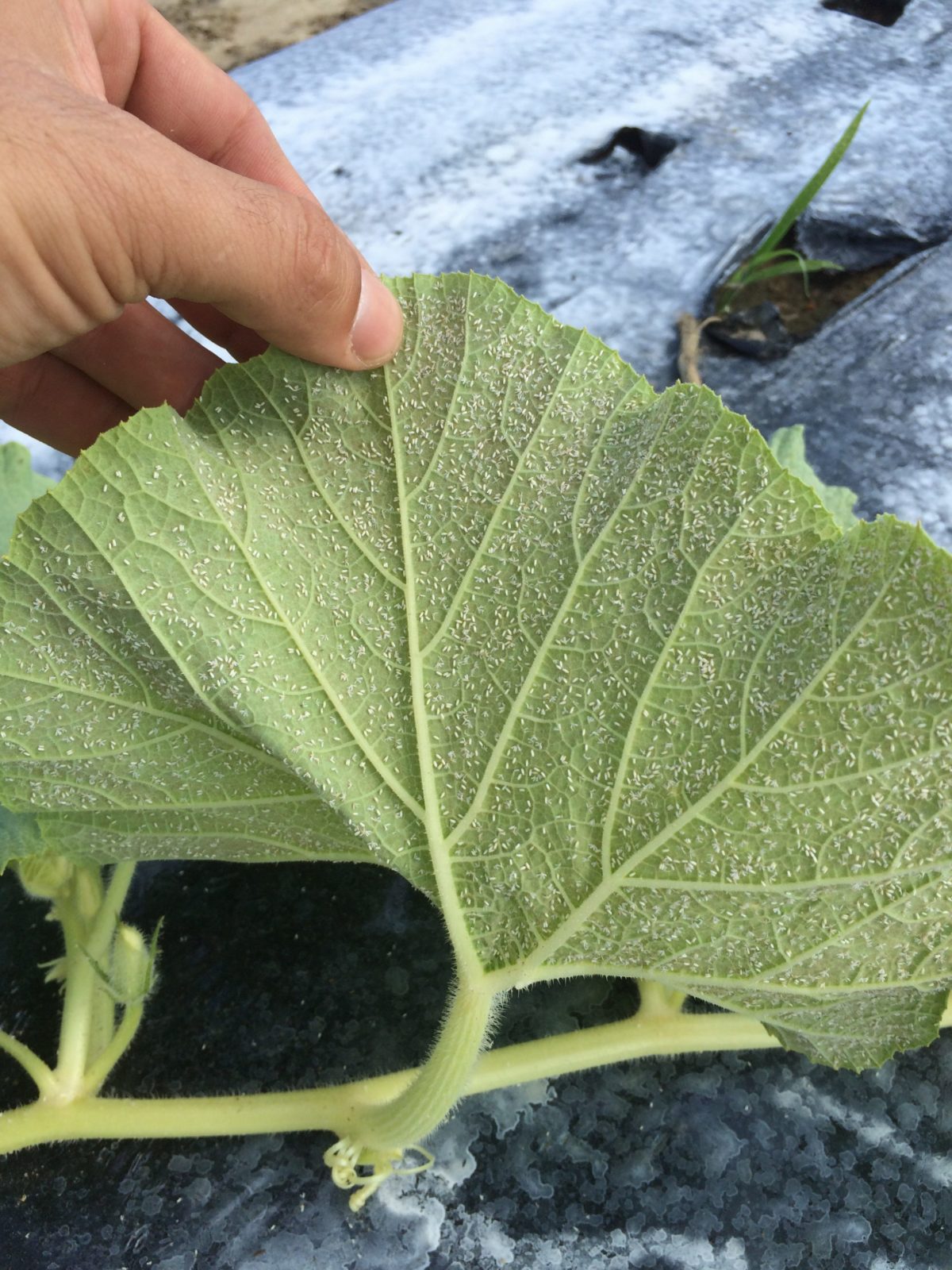The University of Florida Institute of Food and Agricultural Sciences (UF/IFAS) reports that higher Asian bean thrips (ABT) populations were reported across South Florida. However, these were observed only in more mature plantings with few blooms. Insecticide applications are not recommended unless scouting indicates populations are greater than 1.0 ABT per bud or bloom. Populations reached 0.6 per bloom in …
Low to High: Whitefly Populations Vary in South Florida
Whitefly populations remain a problem in some vegetable crops in the Manatee Ruskin area, according to the South Florida Pest and Disease Hotline. Growers and scouts report that whitefly adult and immature numbers are high in tomatoes and squash. They have also reached moderate levels in cucumber and eggplant. Whitefly pressure is also increasing around the southwest Florida area. The …
ABT Populations Vary Across South Florida
According to UF/IFAS, scouts in south Hendry County detected the highest populations of Asian bean thrips (ABT) this week. In south Hendry County, an infestation of 0.2 adult ABT per bloom were reported, though population increases could surge over the next few weeks due to many larvae present. ABT populations were up to 0.1 per bloom in the Moore Haven …
High Populations: Pepper Weevils a Concern for South Florida Producers
According to the South Florida Pest and Disease Hotline, pepper weevils remain moderate to high in various vegetable crops across south Florida. Respondents along the east coast report that weevil populations are high around St. Lucie County. They are moderate at other locations. Populations remain a concern in Manatee and Hillsborough counties. Weevils are showing up in other locations around …
Adult Whitefly Populations Increasing Across South Florida Vegetables
According to the South Florida Pest and Disease Hotline, whitefly numbers remain low in most crops for this time of the season. But according to growers and scouts, adult populations have increased in multiple places, and nymphs are being observed in older tomato, eggplant and watermelon. The spikes seen in some melon fields have led to cucurbit viruses. Populations will …
Asian Bean Thrips Populations Continue to Vary Across South Florida
According to the University of Florida/Institute of Food and Agricultural Sciences (UF/IFAS), Asian bean thrips (ABT) populations continue to vary throughout south Florida. The highest populations were detected in south Hendry County, though populations were very low in the Palm Beach County region. In south Hendry County, infestations were numbered at 0.2 adult per bloom. Larvae have been observed at …
ABT Populations Vary Across South Florida
Asian bean thrip (ABT) populations have increased in recent weeks Homestead, Florida and have been at thresholds since the beginning of the growing season. Intensive insecticide programs are needed to minimize losses, according to the University of Florida Institute of Food and Agricultural Sciences (UF/IFAS). In other areas, though, populations are very low. No more than one Asian bean thrip …
Bacterial Spot: Tomato Disease a Problem in Various Fields in South Florida
A pair of tomato diseases are causing issues for South Florida producers. According to the South Florida Pest and Disease Hotline, bacterial spot disease has slowed in the Manatee Ruskin area but has flared up in other various locations. It continues to move up in tomatoes around Southwest Florida and is severe for some pepper varieties. Bacterial spot is reportedly …
Pepper Weevils Increasing in South Florida
One vegetable pest that has been a problem this fall is the pepper weevil. According to the South Florida Pest and Disease Hotline, pepper weevils are showing up in multiple areas around South Florida. Significant populations are being reported in the Fort Pierce area in early pepper plantings. Infestations have also increased significantly in peppers in Manatee and Hillsborough counties …
Caterpillar Update in South Florida
According to the South Florida Pest and Disease Hotline, scouts in southwest Florida continue to find southern and beet armyworms, tomato fruitworms, loopers, hornworms and melonworms. Worms are active in a variety of crops in the Manatee Ruskin area. There is an increase in armyworm egg masses, and melonworms are being found in cucurbits. Respondents on the east coast report …










